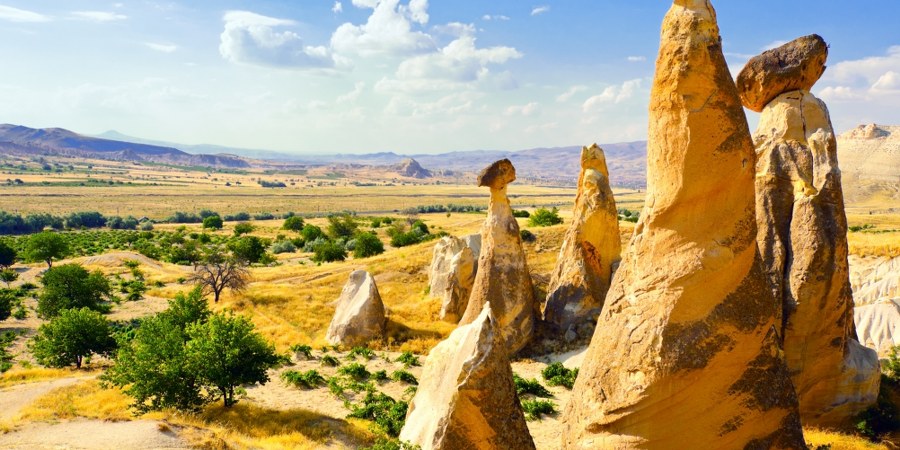Sorry, nothing in cart.
History of Cappadocia
Following the Apostolic age, we have a fair amount of information about Christianity in coastal Anatolia, On the other hand, not much is known about first-century Cappadocia. Nevertheless, it is obvious that an important number of Christian communities existed during the second half of the second century. In the third century, priests of strong personality made the territory a lively center of religious life. At that time Christianity was at its peak.
In the fourth-century Cappadocia was renowned as the home of the Three Great Cappadocian Saints; Basil the Great, Gregory of Nazianus and Gregory of Nyssa. The country was an active center of Christian life and the religious authority of its capital, Caesarea (Kayseri) extended as far afield as Theodosiopolis (Erzurum), Sebaste (Sivas), Melitene (Malatya) and it was in Caesarea that Gregory the Illuminator, the Evangeliser of was ordained by Basil.
The Cappadocians, therefore, built many churches and monasteries and in the volcanic areas hewed them from the soft tufts. They continued doing so until the disappearance of the Christian communities. Masonry- built churches were destroyed by natural and human destruction in the course of time, but the rock churches were lesser effected by such outside factors. The real dangers that were faced by the rocky churches were wind and flood. After the walls cracked either by wind or flood the churches were then under the direct influence of nature. Such geologic conditions formed Cappadocia into a museum of monuments.
With our Cappadocia tour from Istanbul package, you will be able to visit every important sights of the Cappadocia.
The history of these monuments begins in the first century and extends up to the 13th century. These monasteries, churches, and convents are astonishing in number It has been estimated that there are 1000 still existing. Nearly 150 of these are churches and chapels with mural paintings. These decorations must provide most of the information about religious history since there are not many inscriptions at hand about that period.
Before talking more about the rock churches a short glance at the Byzantine history is necessary. Before Cappadocia was occupied by Tiberius, Central Anatolia was known as a free continent. The Persians invaded Anatolia at the beginning of the Vllth century. They captured Caesarea in 605 and occupied it until 611. They turned southwards and after capturing Jerusalem and they carried the True Cross to Ctesiphon. In the VIII-th century Cappadocia was a constant war- front of the Arab-Byzantine Wars. The frontier moved to and fro, depending on the fate war. Although Caesarea and Cappadocia remained connected to the Empire the region was under the constant threat of Arab raids.
Caesarea was captured twice, in 647 and 726 but was not destroyed. The Arabs burned and destroyed whatever came in their way. But the people got used to the situation and took refuge in the underground cities such as Derinkuyu and Kaymaklı. (If you want to make a trip to Derinkuyu and Kaymaklı Underground Cities, you can join our Cappadocia Tours.)In the mountainous regions rock churches and homes provided refuge for the people. When the enemy came they closed the doors with large round stones which look like mill-stones. The only thing Arabs could do was to smoke thorn out. But the ^danger for the Christian communities was not only the Arabs because large numbers of people were killed during the Great Massacres of the Iconoclastic Period (726-843).

Leave a Reply